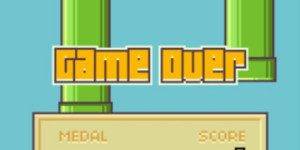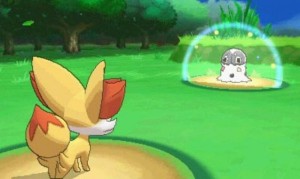It is fair to say that most people had not heard of Flappy Bird prior to its explosion of popularity at the end of January. For that reason, it will come as a shock to most people that the game was released all the way back in May of last year. The sudden exposure of both Flappy Bird and the games creator, Dong Nguyen, have also unearthed a few shady practices in regard to how developers can take a game that has fallen into obscurity, and turn it into an overnight success. Nguyen’s decision to remove his highly successful game from both the Apple and Google app stores is attributed to the disruption of his simple life. Criticisms have been leveled against him of similarities between his game and other works that have come before it.
The most obvious are the pipes that form the obstacles of the game. They look like they could have been ripped out of Super Mario World, except they have not. They are original, although uncreative, sprites. Mario disappears down pipes, everyone knows that. Those pipes are green, and the best way for anyone to convey that something is a pipe is to colour it green for instant recognition. That being said, any number of other obstacles could have been used to gate progression during play, perhaps something more relevant to the bird that does the flapping, like trees for example.
Dominating the mobile market, it is no surprise that Flappy Bird has spawned several imitators to its crown, but the games itself has similarities to another that has come before it, Piou Piou. While yes, both games are about avoiding obstacles on a constantly moving screen, that is where the similarities end. The obstacles in Piou Piou are not lethal like they are in Flappy Bird, nor are the gaps quite as narrow. Death comes from being pushed off the edge of the screen when failing to dodge quick enough. Also, gravity is more of an issue in Flappy Bird, forcing the player to tap the screen more often and therefore make more mistakes. As the game goes on, the pace begins to pick up in Piou Piou and eventually becomes impossible to continue, whereas the difficulty never increases in Flappy Bird, leading to a more skill-based game.
So, while Flappy Bird is not very creative, it is an original piece of software that has enough difficulty to drive people insane while keeping them coming back for more. But creativity is something that people continually ask for, yet the market seldom seems to want. Pokemon is such a strong brand that it can sell hardware as well as software, yet the core game has changed little between its iterations. Yes, there are quality of life changes and improvements to the gameplay with each new title, as well as a host of new Pokemon with each generation, but nothing is radically different. If the RPG mechanics were removed and people had to rely on skill rather than better stats, would the game still be as popular?
Games cannot get away with blatant theft though, as the developers of Limbo of the Lost discovered when people realised that the game contained assets from no fewer than ten other sources. These were not coincidental texture usages, but complete architecture theft in some cases. Despite spending thirteen years in development, the game was pulled shortly after its American debut. Duke Nukem never had it that bad.
At the end of the day, Flappy Bird is no longer available for most of us to play, short of spending a few thousand on eBay. Nguyen will continue to reap the benefits from people who still have access to it, and for now is free to continue developing more games in relative peace. Until the next big thing comes along, the internet will continue to simultaneously rage over not being able to play the game, and not wanting to play a rip-off.
Have you played Flappy Bird? Do you think it needed more creativity? Does the mobile market lack creativity in general? Let me know in the comments!

